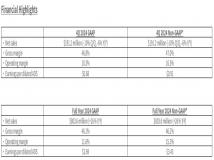Linux shell入门实例演示,本人菜鸟新入门,希望与大家一起分享和交流linux shell入门学习的经验和心得。
变量:
("")双引号:用于标记多个特殊符号,但是对$,,`,!符号例外
('')单引号:作用同上,但是可以标记""所不能的特殊符号
(``)反引号[!前的那个符号,不是单引号]一般用来执行命令
()反斜杠:转义符号,用于标记单个特殊符号.
('')单引号:作用同上,但是可以标记""所不能的特殊符号
(``)反引号[!前的那个符号,不是单引号]一般用来执行命令
()反斜杠:转义符号,用于标记单个特殊符号.
|
1
2
3
4
|
[root@redhat ~]# winner=bob[root@redhat ~]# notice="the person who won is $winner" [root@redhat ~]# echo $noticethe person who won is bob ##将$winner解析成变量 |
|
1
2
3
4
5
6
|
[root@redhat ~]# winner=bob [root@redhat ~]# notice='the person who won is $winner' [root@redhat ~]# echo $noticethe person who won is $winner ##$winner只是符号[root@redhat ~]# echo $winnerbob |
|
1
2
3
4
5
6
|
[root@redhat ~]# winner=bob[root@redhat ~]# notice="the person who won is $winner" [root@redhat ~]# echo $noticethe person who won is $winner ##用将$转义成字符 [root@redhat ~]# echo $winnerbob |
|
1
2
3
|
[root@redhat ~]# listnew='ls *.new' [root@redhat ~]# echo $listnewls main.cf.new master.cf.new ##仔细查看,两个结果不一样的 |
|
1
2
3
|
[root@redhat ~]# listnew=`ls *.new` [root@redhat ~]# echo $listnew main.cf.new master.cf.new |
空格(space): 解析命令行参数
(*)(?)({and}):产生文件名列表
(.): 代表当前目录
($): 对变量求值
(>)(<): 重定向标准输入或输出
(&): 执行后台命令
(|): 管道输出
(*)(?)({and}):产生文件名列表
(.): 代表当前目录
($): 对变量求值
(>)(<): 重定向标准输入或输出
(&): 执行后台命令
(|): 管道输出
一般命令:
echo 显示变量及字符
read 从用户处接受输入
<< 输入重定向
read 从用户处接受输入
<< 输入重定向
脚本命令相关:
$0 Linux命令名
$n 命令行参数
$* 由号码1开始的所有的命令行参数
$@ 分别访问命令行参数
$# 命令参数的个数
$n 命令行参数
$* 由号码1开始的所有的命令行参数
$@ 分别访问命令行参数
$# 命令参数的个数
运算:
exprort 将局部变量导出为该shell中的全局变量
+,-,*,/,>,<,>=,<=,=(用于字符串的比较),==(用于数字的比较),!=,&(与),|(或),!(非).
+,-,*,/,>,<,>=,<=,=(用于字符串的比较),==(用于数字的比较),!=,&(与),|(或),!(非).
|
1
2
3
4
5
6
|
[root@redhat ~]# let a=2*7 [root@redhat ~]# echo $a 14[root@redhat ~]# let a="2 * 7" [root@redhat ~]# echo $a 14 |
-gt 一个数是否大于另一个数
-lt 小于
-ge 大于等于
-le 小于等于
-eq 等于(用于数值)
-ne 不等于
-z 是否为空字符串
-n 字符串是否大于0
= 字符串是否相等
!= 是否不等
str 是否非空
-a 与
-o 或
! 非
-f 是否为普通文件
-s 文件是否为空
-r 文件是否可读
-w 文件是否可写
-x 文件是否可执行
-d 是否为目录
-h 是否为符号链接
-c 是否与字符设备相关联
-b 是否与块文件相关联
|
1
2
3
4
5
6
7
8
|
[root@redhat ~]# num=5 [root@redhat ~]# test $num -eq 10[root@redhat ~]# echo $?1 ##返回比较的结果值 [root@redhat ~]# num=5 [root@redhat ~]# test $num -eq 5 [root@redhat ~]# echo $? 0 |
|
1
2
3
4
5
6
7
8
|
[root@redhat ~]# num=5 [root@redhat ~]# [ $num -eq 10 ]##注意中间空格的地方[root@redhat ~]# echo $? 1[root@redhat ~]# num=5 [root@redhat ~]# [ $num -eq 5 ] [root@redhat ~]# echo $? 0 |
|
1
2
3
4
5
6
7
8
9
10
11
12
13
14
15
16
17
18
19
20
21
22
23
24
25
26
27
28
29
30
31
32
33
34
35
36
37
38
|
[root@redhat ~]# vi lss.sh #!/bin/bash ##使用bashecho This is a list Bash Scriptecho S: list sizesecho L: List all file informationecho C: list c Filesecho -n "Please enther choice:"read choice ##等待用户输入case $choice ins|S) ##如果输入的是s,不区分大小写 ls -s;;l|L) ##如果输入的是l,不区分大小写 ls -l;;c|C) ##如果输入的是c,不区分大小写 ls *.new;;*) ##都不是的话echo erroresac[root@redhat ~]# chmod +x lss.sh [root@redhat ~]# ./lss.sh This is a list Bash ScriptS: list sizesL: List all file informationC: list c FilesPlease enther choice:ltotal 69-rw-r--r-- 1 root root 1251 Oct 24 15:01 anaconda-ks.cfgdrwx------ 3 root root 1024 Oct 24 15:04 Desktop-rw-r--r-- 1 root root 545 Jan 19 15:22 genhtml.sh-rw-r--r-- 1 root root 47583 Oct 24 15:01 install.log-rw-r--r-- 1 root root 4702 Oct 24 15:01 install.log.syslog-rwxr-xr-x 1 root root 248 Jan 19 15:56 lss.sh-rw-r--r-- 1 root root 2737 Jan 6 12:45 main.cf.new-rw-r--r-- 1 root root 3125 Jan 6 12:45 master.cf.new-rwxr-xr-x 1 root root 263 Dec 5 17:39 userandgroupadd.sh |
声明: 此文观点不代表本站立场;转载须要保留原文链接;版权疑问请联系我们。










